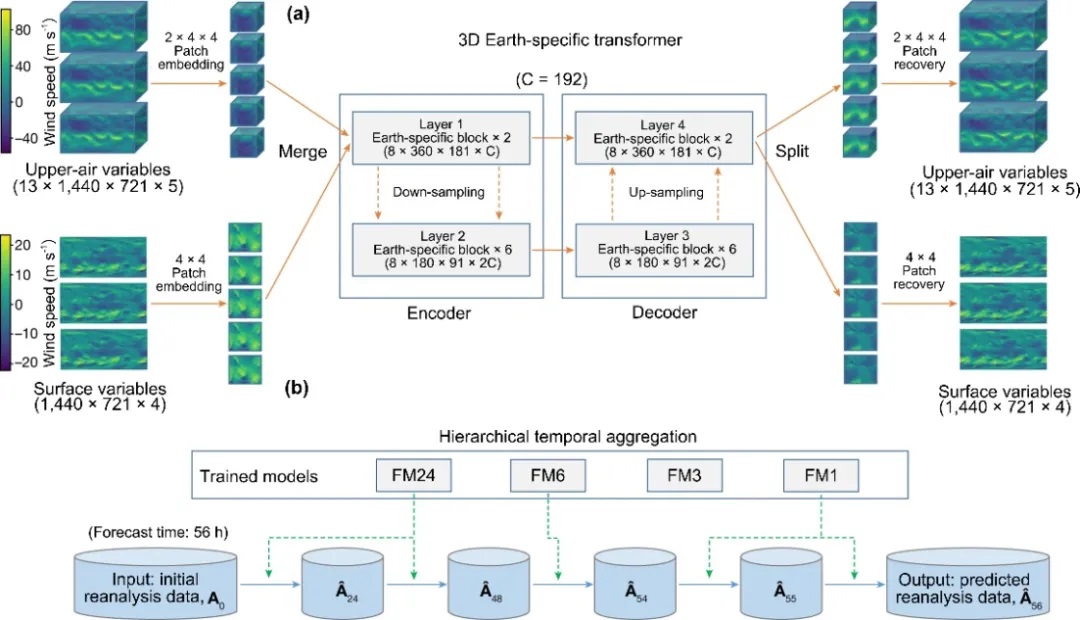Huang Jianping
Huang Jianping is an academician of the CAS Member and the Academy of Sciences of developing countries. We have been focusing on the research of semi-arid climate change for a long time, and have built an internationally leading comprehensive observation system for semi-arid climate after more than ten years. We have also achieved a series of fundamental and internationally influential original research results in the study of semi-arid climate change and its mechanisms, and proposed a similarity dynamic model weather prediction method.
The numerical weather forecasting model driven by atmospheric dynamics theory has always been an important support for modern weather forecasting. With the development of machine learning technology, artificial intelligence (AI) models have begun to be applied in the field of weather forecasting. This article aims to interpret 'The Application of AI in Weather Forecasting' from the top ten scientific breakthroughs selected by Science in 2023, and explore the deep integration scheme of atmospheric dynamics models and artificial intelligence models (Dynamics Artificial Intelligence, DAI). DAI technology is expected to enhance the accuracy of extreme weather and climate prediction, and achieve more refined weather forecasting.
Artificial intelligence has made significant progress in the field of weather forecasting, but still has certain limitations. As Science points out, 'these AI models are not solving the atmospheric dynamics equation itself, but are trained based on reanalysis data from the European Centre for Medium Range Weather Forecasts over the past 40 years. It’s difficult for them to predict extreme weather.”
The existing artificial intelligence models have significant shortcomings in terms of model interpretability, data uncertainty, model transferability, and accuracy in predicting extreme events. In fact, the occurrence of extreme weather events is a highly nonlinear abrupt process. AI models can predict the weather conditions before and after the abrupt change well, but cannot accurately capture and predict the abrupt process of the atmosphere.
Compared with AI models, numerical models have reliable mathematical and theoretical frameworks that can better capture physical processes and abrupt changes in weather conditions, but they are also not accurate enough. Throughout the history of atmospheric science development, the advancement of atmospheric science is mutually reinforcing with the development of science and technology. Building a weather forecasting model (DAI model) that combines atmospheric dynamics and artificial intelligence technology is an inevitable trend and an important direction for improving weather forecasting accuracy in the future. This article presents a specific DAI fusion scheme.
The future weather forecasting system will develop towards a more personalized, real-time updated, and automated direction. Deeply integrating atmospheric dynamics models with AI models can not only significantly improve the accuracy and efficiency of weather forecasting, but also provide users with reliable and customized meteorological information analysis and decision-making recommendations. This fusion paradigm will create opportunities for innovation in atmospheric science theory and more accurate and refined weather forecasting, and is a key driving force for achieving high-quality development of the meteorological industry. We look forward to continuous breakthroughs in atmospheric science and moving towards new heights.

Figure 1: The 3DEST (3D Earth Specific Transformer, a three-dimensional neural network adapted to the Earth coordinate system) architecture of Pangu Weaver. (a) 3DEST architecture. 3DEST utilizes codecs and block techniques to process 3D weather data, and uses position deviations optimized for Earth data to accelerate model convergence speed. (b) Hierarchical time aggregation algorithm. FM1, FM3, FM6, and FM24 represent prediction models with lead times of 1, 3, 6, and 24 hours, respectively. Simplify the 56 hour prediction into two 24-hour, one 6-hour, and two 1-hour model operations to reduce the number of iterations
Figure 2. Deepmind's GraphCast architecture. GraphCast uses a Graph Neural Network (GNN) model to map the input data of the original latitude and longitude grids to the learning features on multiple grids. This model can predict weather conditions within 10 days within 60 seconds
Figure 3 shows the schematic diagram of the 'butterfly effect' of the Lorentz chaotic system calculated using the R-T method according to equation (1), where P=10, Ra=28, and b=8/3
Figure 4. According to Charney's 6-step spectral model, Figure 4 shows that the model can simulate abrupt changes in the atmosphere based on factors such as thermal and dynamic processes, where the value of π k reflects the variation of thermal differences between land and sea. (a) When the thermal difference between land and sea is weak, it is a typical meridional circulation; (b) The abrupt transition process of meridional circulation from latitudinal circulation to meridional circulation with the change of ψ k; (c) A typical meridional circulation occurs when there is a strong difference in heat between land and sea
